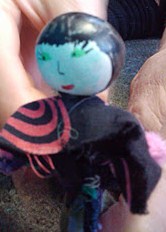Home-brewed education at AHB
/Nicole Lessin is an Austin-based writer whose work has appeared in the San Antonio Express-News, Edible Austin, and the Hundreds of Heads Survival Guides. She has recently returned from a two-year adventure living in Denmark with her husband and two daughters, both of whom are thriving at AHB Community School. We invited Nicole to the blog to write about the school and its unusual fundraising and community-building tradition.
For the past eight years, Austin Home Base Community School (AHB), a small, progressive elementary and middle school in Hyde Park, has been hosting the Austin Home Brew Festival, an annual fundraiser that celebrates Central Texas’s finest home-brewed beers, meads, ciders, and kombuchas.
Though the brewfest began as a small backyard gathering of parents swapping their homebrews and tossing cash into the kitty, the event has in more recent years emerged as a player in the city’s iconic festival landscape, offering participants a unique, DIY Austin experience.
“People say the beers at our festival taste professional, but they are not mass marketed,” says AHB parent and longtime festival volunteer Wendy Salome. “They are unique and individual and they exist in that moment.”
Indeed, this year’s uncommon flavors—all preselected by a panel of certified beer judges and not otherwise available for sale in any stores—will include Sweet Coffee Stout, Summer Cider, and some great traditionals like Helles Lager.
While small-batch beer and progressive education may seem at first glance to be unlikely bedfellows, festival organizers say the slow-food spirit of home brewing is a perfect match for AHB’s creative and collaborative approach to education.
“We talk about AHB a lot as a hybrid, taking the best of different things and creating something even better out of it, and I think that’s what homebrewers do as well,” Salome says. “It’s kind of taking the things that you like about your different beers and making the beer that works best for you. That’s what families and administration have done all along at AHB.”
To be sure, in an era of increasingly standardized education, testing, and grades, the emphasis at AHB is on authentic, project-based learning, critical thinking, and community participation. Instead of standard grade levels, kids work in mixed-age classrooms. And instead of mandatory attendance five days a week, the students’ school week ranges from three to five days—depending on age and interests.
“When I first discovered the school and came into the classrooms, the thing that hit me the most was the confidence and the importance of the narrative voice of the child to be heard, to be understood, to be supported, and that follows along in everything we do in our integrated curriculum,” says AHB Director Mary Williams. “The teachers set the agenda, but then it’s up to the children to help drive the curriculum and to complete the process and the products and the projects.”
Parents say the result is a unique blend of creative freedom with rigorous academics, often at the level of or even exceeding international standards.
“We wanted to find a place where kids could grow and be free and be creative, but also have structure, so we knew that there was accountability for their learning,” says festival volunteer and AHB parent Valerie Sand. “I wanted someone who knew what they were doing to say, this is what’s going to happen now. Let’s make it fun. Let’s give you ownership of it. And I really believe in that, and that makes it easy to get involved.”
The 8th Annual Austin Home Brew Festival will be held from 6:00 to 9:00 p.m. on Friday, November 4, 2016, at Saengerrunde Hall. For more information, go to facebook.com/AustinHomebrewFestival or ahbfestival.org.
Nicole Lessin
































